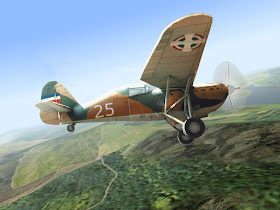Blindado anfibio Type 4 Ka-Tsu
Dada
la propia naturaleza del teatro de operaciones del Pacifico se hacía
imprescindible la utilización de medios anfibios blindados para dotar de más
movilidad a las tropas. El Type 4 Ka-Tsu tenía una capacidad para
transportar a 40 soldados y fueron utilizados para operaciones logísticas entre
islas. Además de las características propias de este tipo de vehículos podían
ser transportados por submarinos, en cubierta, para ser utilizados en operaciones
especiales.
El
vehículo básico también fue utilizado para desarrollar una versión de carro de
combate torpedero entre 1942 y 1943. Todo hace pensar que el proyecto estaba
encaminado a la acción contra la armada estadounidense en Pearl Harbour, aunque
finalmente no tomaron parte en la acción. Se trataba de transportar a bordo de
5 submarinos (I-36, I-38, I-41, I-44 e I-53) un total de 10 carros de este tipo
equipados con dos torpedos cada uno para atacar a la flota enemiga desde dentro
de sus instalaciones. Al desecharse la idea el proyecto se durmió en el tiempo
y las primeras pruebas operativas tuvieron lugar en mayo de 1944. De esta
versión de torpedeo se completaron tan solo 10 vehículos.
El
vehículo alcanzaba las 16 toneladas de peso, con 11 metros de longitud tenía
una tripulación de cinco hombres. Su blindaje solo le protegía del fuego ligero
ya que contaba con 10 mm de blindaje máximo. Estaba armado con dos
ametralladoras pesadas de 13 mm para autodefensa y para proporcionar fuego de
apoyo al desembarco. Del vehículo anfibio original se completaron cerca de 100
ejemplares.
Fuentes:
TREWHITT, P. “Armoured Fighting Vehicles” Dempsey-Parr, 1999
ZALOGA, S.
“Japanese Tanks 1939-45” Osprey, 2007
PACERNA, B. “Japanese armor” AJ Press, 2003
English
version
Given the nature of the Pacific theater of operations became vital to use armored
amphibious means to
provide more mobility to the
troops. The Type 4 Ka-Tsu had a capacity
to transport 40 soldiers and were used for logistics operations between islands. In
addition to the characteristics of these vehicles could be
carried by submarines, on deck,
for use in special operations.
The base vehicle was also used to develop a version of chariot shortstop between 1942 and 1943. Everything suggests that the project was aimed at the action against the U.S. Navy at Pearl Harbour, but ultimately took no part in the action. They were transported aboard submarines 5 (I-36, I-38, I-41, I-44 and I-53) a total of 10 tanks of this type equipped with two torpedoes each fleet to attack the enemy from within their facilities. When discarded the idea the project was asleep at the time and the first operational tests took place in May 1944. In this version of torpedoing completed just 10 vehicles.
The vehicle reached the 16-ton, 11-meter long had a crew of five men. His armor protected him from the fire just as it had lightweight 10 mm maximum shielding. He was armed with two 13 mm heavy machine guns for self-defense and to provide fire support to the landing. Original amphibious vehicle completed about 100 copies.
Sources:
TREWHITT, P. “Armoured Fighting Vehicles” Dempsey-Parr, 1999
ZALOGA, S.
“Japanese Tanks 1939-45” Osprey, 2007
PACERNA,
B. “Japanese armor” AJ
Press, 2003
































